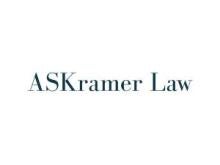It is a common practice for businesses to manage their business price risks by entering into derivative contracts. Because their business activities generate ordinary income and loss, they want to obtain ordinary tax treatment on risk-shifting derivative transactions. This is because capital losses are basically worthless to many businesses, so they seek to qualify for favorable tax treatment on their hedges. They want to be able to net their gains and losses on their business assets, obligations, and borrowings against their gains and losses on their hedging positions.
Qualified tax hedges entered into to manage a taxpayer’s business risks are taxed at ordinary rates, allowing netting of gains and losses between hedged items and hedges. Further, any resulting income or loss is accounted for under a tax accounting method that “clearly reflects income.”
One of the most important requirements to get favorable tax hedging treatment is that taxpayers must clearly identify their tax hedges “before the close of the day on which it was acquired, originated, or entered into,”[1] and they must identify the item being hedged on a “substantially contemporaneous”[2] basis. These requirements are discussed below.
Hedging Transaction Defined
A hedging transaction is any transaction entered into by a taxpayer in the normal course of trade or business, primarily to manage risks that fall into one of three types:
-
Price changes or currency fluctuations with respect to ordinary property that is held or to be held by the taxpayer.
-
Interest rate or price changes or currency fluctuations with respect to borrowings made or to be made, or ordinary obligations incurred or to be incurred, by the taxpayer.
-
Other risks as the Treasury Secretary prescribes in Treasury Regulations.
In other words, hedging transactions must manage certain business risks associated with a taxpayer’s ordinary property, obligations, and borrowings. These transactions can also manage other transactions that a taxpayer anticipates entering into.[3] Transactions that do not qualify as tax hedges are treated as “speculative.”
Tax Treatment of Qualified Hedges
Taxpayers receive ordinary income and loss on qualified hedges. This allows taxpayers to match the gain and loss on their hedging transactions with their gain or loss on the hedged items, while requiring them to report hedging gain or loss in a manner that clearly reflects income.[4]
When the Hedging Rules Are Not Met
Taxpayers are often surprised to learn that tax hedging rules do not follow the financial accounting rules and that hedge designations for financial accounting purposes are irrelevant for tax purposes. To ensure tax compliance, taxpayers should regularly review their identification and documentation procedures to determine that their transactions are properly identified and to learn if there have been changes in their hedging activities.
If a qualified tax hedge is not properly identified, or a transaction that is not a hedge is improperly identified as a tax hedge, so-called whipsaw rules apply so that gains are ordinary and losses are capital.[5][TM1]
Identification Methods
Taxpayers can identify their hedges and hedged items on a transaction-by-transaction basis (specific identification), or pursuant to an aggregate tax hedge policy statement (aggregate program).
Specific Identification of Hedges
Hedges must be identified before the end of the day on which the transaction is entered into. Taxpayers can designate certain accounts as hedge accounts, or they can simply attach an identifying notation to flag a transaction as a hedge.
Identification of Hedged Items
The risk being hedged—that is, the hedged item—must be identified on a “substantially contemporaneous” basis that cannot be more than 35 days after the taxpayer enters into the hedging transaction.
Aggregate Hedging Identification
Taxpayers who hedge on an aggregate or portfolio basis can adopt an aggregate identification program. Treas. Reg. § 1.1221-2(f)(3)(iv) allows taxpayers to identify hedges on an aggregate basis by setting out a description of the aggregate hedging program in its books and records and establishing a system under which individual hedging transactions are entered into pursuant to the aggregate program.
Tax Accounting
Treas. Reg. § 1.446-4 requires qualified hedging transactions to be accounted for under a method of tax accounting that clearly reflects the taxpayer’s income. For aggregate programs, the taxpayer’s books and records must contain a description of the tax hedge accounting method used for each type of hedging transaction subject to the aggregate program, and it must contain enough detail to sufficiently show how the clear reflection of income standard is met.
Conclusion
Taxpayers should regularly review their risk management and tax identification and documentation policies and procedures to ensure compliance. To get favorable tax hedge treatment, taxpayers must identify and report their hedging transactions separately from any speculative transactions, if any. In addition, they must also meet tax reporting and recordkeeping requirements. Whether relying on the specific identification method or by adopting an aggregate hedging program, proper policies, procedures, identification, and documentation avoid costly, avoidable, and unfavorable tax results.
FOOTNOTES
[i] Code §1221(a)(7).
[ii] Treas. Reg. §1.1221-2(f)(2).
[iii] Code §1221(b)(2)(A). Ordinary property: “held or to be held”; borrowings: “made or to be made”; and ordinary obligations: “incurred or to be incurred.”
[iv] Treas. Reg. §1.446-4.
[v] Code §1221(b)(2)(B).
[TM1]Is this the site for the citation: https://www.irs.gov/irm/part5/irm_05-020-006




 />i
/>i
